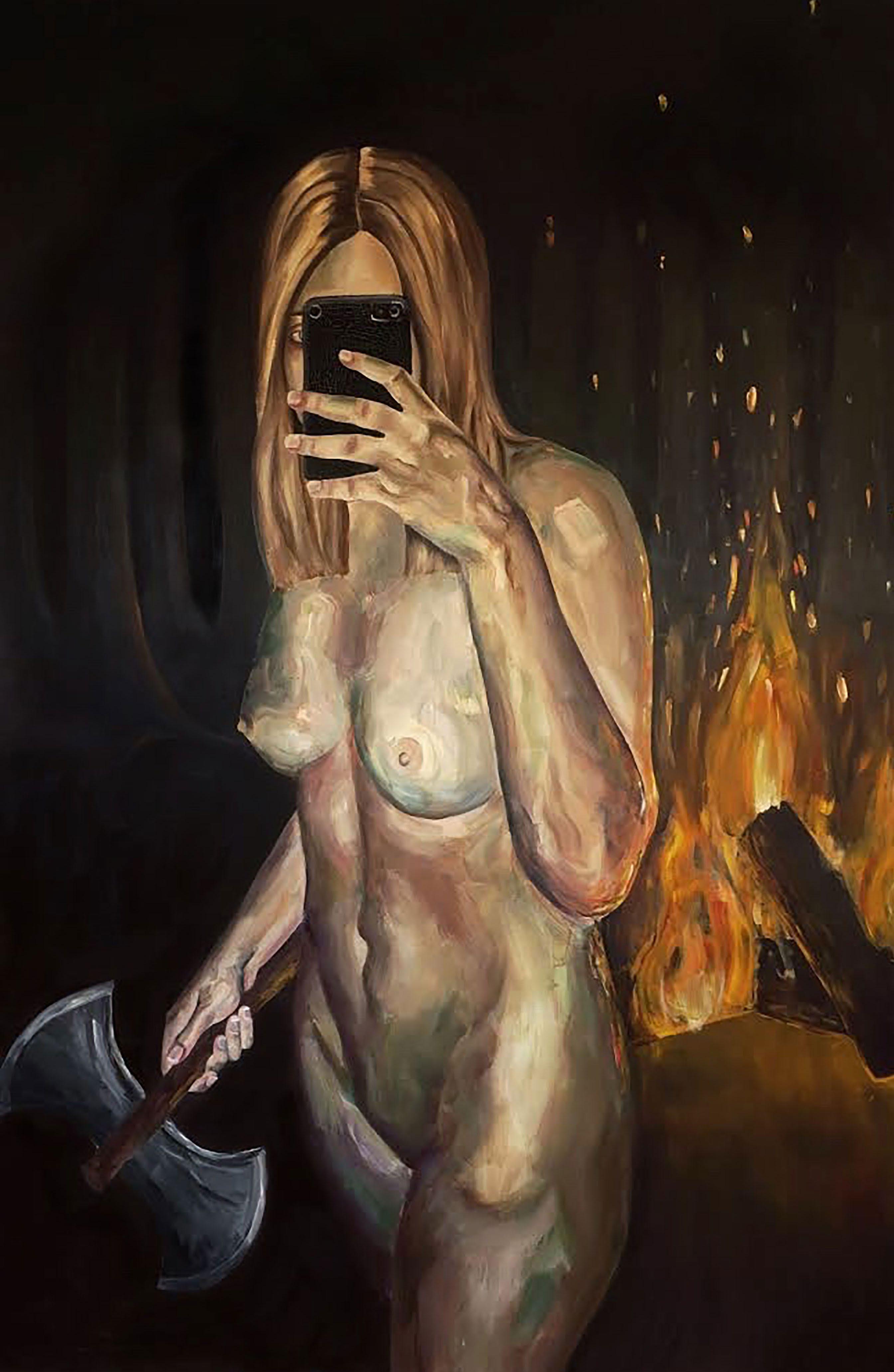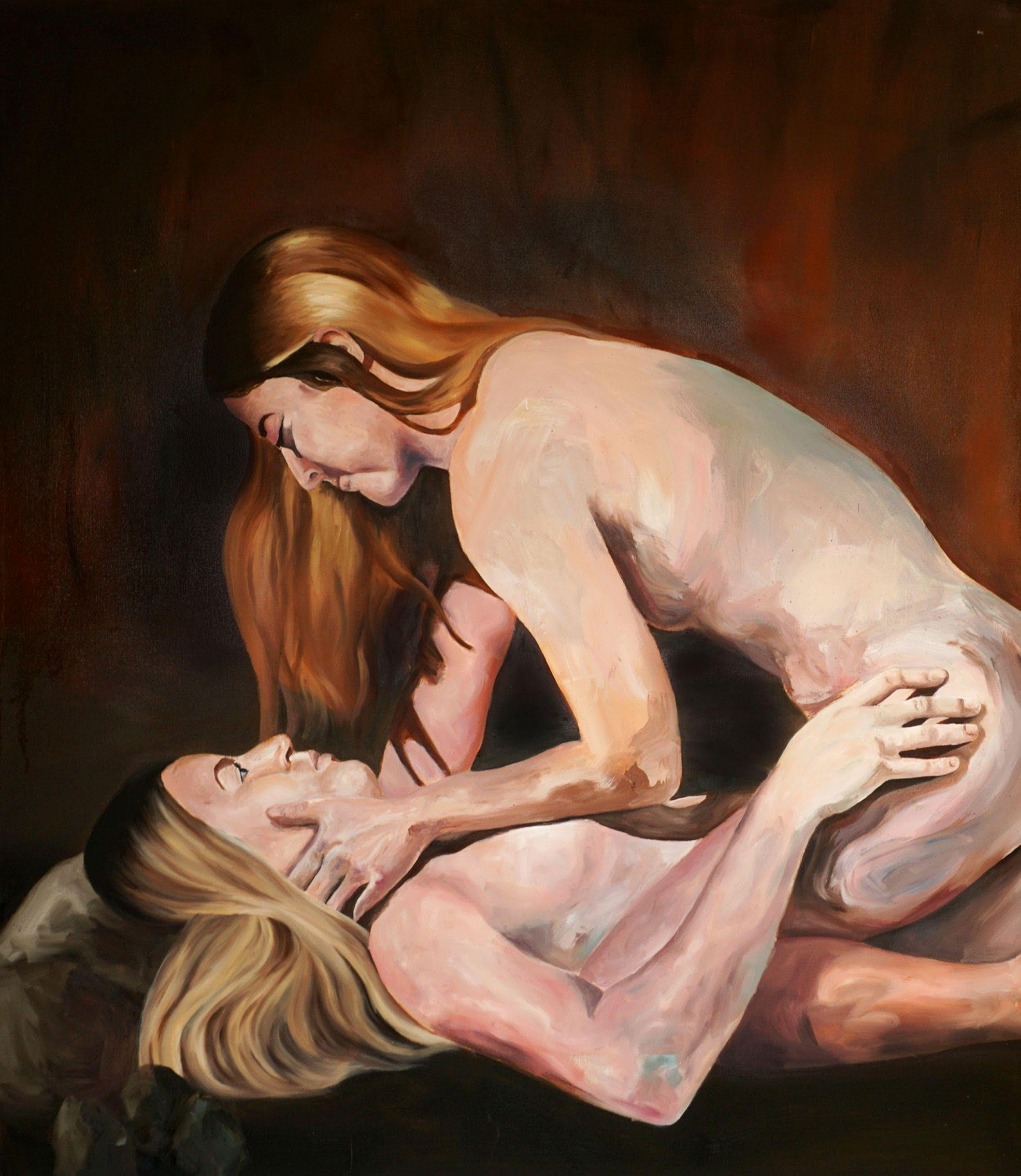
3 minute read
Nikki Kelsay
No Camera Man 72 x 48 in. Oil paint 2020
The focal point for my full body of work surrounds the scrutiny of minoritized human experiences. Through a visual exploration of marginalized identities, I have narrowed my current practice around the queer, female-presenting body and its relationship with an outside audience. Through mostly oil paintings and drawings, my work challenges the fetishization of queer women and women-loving woman (wlw) relationships that has been seeped into our patriarchal society. Much of my perception of my own androgynous, lesbian identity has been influenced by my Catholic upbringing in the Chicago suburbs. This has catapulted me into an investigation of the presentday relationships and tensions between Christianity and sexuality, and the origins of these intersections. I observe how religion influences social norms, including the male gaze and how misogyny is perpetrated through certain Christian ideals. In turn, I meditate on these systemic, male-dominated power structures and how women and people within the LGBTQIA+ community can push against their oppressive agendas.
Advertisement
The series I am currently working on, titled The Burning Confessional, has allowed me to reexamine my personal relationships as a queer woman while destigmatizing the naked, female-presenting body as a vehicle for the hypersexual male gaze. Each painting is approximately 50 x 75 in. This size is convenient personally, as I genuinely enjoy working large-scale, but it also purposefully envelopes the audience into these scenes of empowered queer women. This is an important element of this body of work, seeing that the size is a direct response to my coming-of-age that was influenced by a society that thrives off of LGBTQIA+ people hiding in the shadows. The setting of my childhood led me to believe that my existence made people uncomfortable, so I invite them to work through that uneasiness in front of my canvases.
The background of each piece in the series is primal and remote, giving each subject a sense of solitude that is inspired by a personal desire to remove myself from and critique many negative societal impacts on my mental health, including digital and physical spaces where I have felt judgement for my sexual identity. This intentional background choice also allows the audience viewing the piece to be conscious of their relationship alone with the figures. In my piece To Attract the Sublime, the subjects blatantly disregard the audience, therefore rejecting the need for the male gaze and

dismantling its power. Similarly, each figure in the series is positioned to challenge the audience’s reason for being there.
I am beginning to incorporate an infatuation of grotesque, macabre, and post-apocalyptic themes into this body of work, as well. Since a young age, I have obsessed over horror films and artists who unveil a darker and more disturbing world, such as Hieronymus Bosch, Odd Nerdrum, Francisco Goya, and Zdzisław Beksiński. I look forward to deepening my connection with these themes as I continue to pinpoint their place in my conceptual thinking.
Formally, I am finding my place in contemporary art through my painting and drawing style, which has developed more marks in its hand and bolder color choices within the figure. Recently, I have also begun to incorporate installation into my practice and I am interested in exploring how art and material can be used to create a more interactive experience for the audience. My installation work, Fear Factor, allowed me to investigate my paintings in relationship to their surroundings. I am continuing to create installation pieces and experimenting with the interconnection between my paintings, drawings, and the spaces they inhabit. In doing so, I aim to further evolve my practice and create new conversations around my work. ▪






